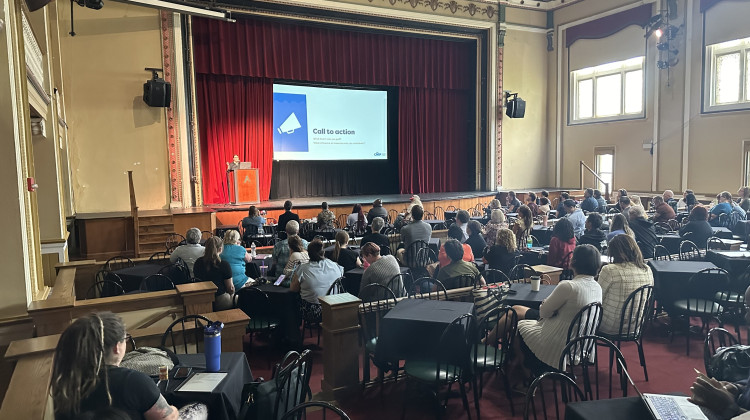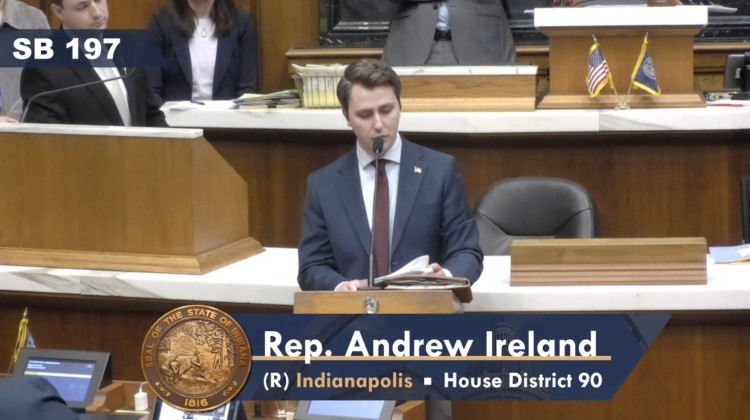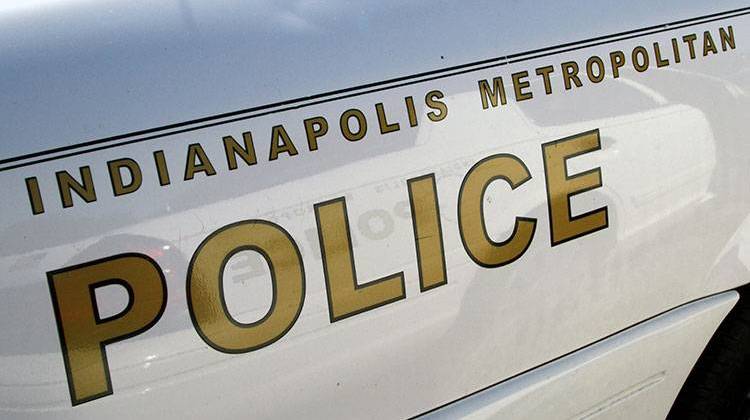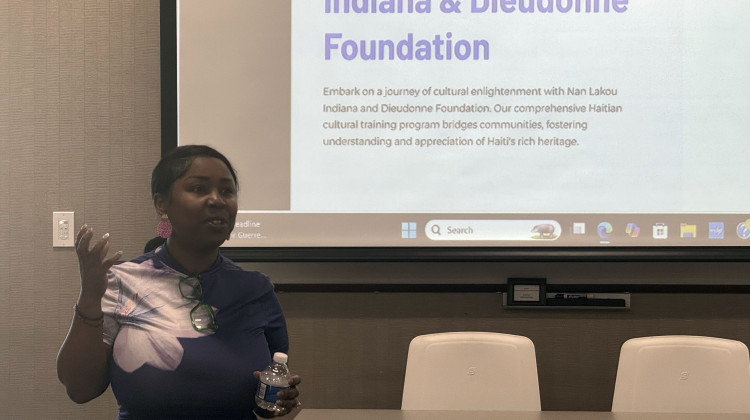
CHIP executive director Chelsea Haring-Cozzi called for the community to do more to combat homelessness in Indianapolis.
Zak Cassel / WFYIAn annual census found 1,701 individuals experienced homelessness in Marion County on a single night in January, a five percent increase from last year. The number of unsheltered people dropped five percent, from 357 to 339 people.
That’s still about three quarters higher than the number of unsheltered counted in 2022 and triple those counted in 2019.
The census found historic inequities haven’t improved. Over half surveyed were Black individuals, while about 30 percent of Marion County’s overall population is Black. These numbers have been over 50 percent since at least 2019.
More than 100 people gathered on a rainy Wednesday for an event in the Basile Theater at the Historic Athenaeum to learn about the state of homelessness in Indianapolis.
Mayor Joe Hogsett opened the discussion with remarks about his administration’s efforts to reduce the numbers of residents without a home. Those efforts include more permanent supportive housing, legal assistance to thousands of tenants facing evictions and development projects to increase the number of available beds.
“But what the data tells me is that we must do more,” Hogsett said.
Individuals surveyed most commonly cited job loss and lack of income as the cause of their homelessness.
In April, the city and the US Department of Housing and Urban Development entered a cooperative agreement to take over the Indianapolis Housing Agency after years of problems. That agency is responsible for providing housing vouchers for low income residents.
CHIP — the Coalition for Homelessness Intervention and Prevention — spearheads the annual Point-in-Time count and hosted the summit. They partner with shelters and dozens of volunteers to survey sheltered and unsheltered individuals. The count is used by government agencies and organizations to make decisions about where to direct resources.
CHIP Executive Director Chelsea Haring-Cozzi said wider awareness of the issue is needed. “Homelessness hasn’t really been on the agenda much at the state level,” said Haring-Cozzi. “We want this to be on the public agenda.”
Those experiencing homelessness include people without a nighttime residence and families fleeing domestic violence. Those staying in rapid rehousing programs or other permanent housing programs are not included in the survey.
Last year, more people experienced homelessness in the US than each year back to at least 2007. Federal estimates found that 653,104 people experienced homelessness in 2023, according to aggregated PIT counts across the country. These numbers have increased annually since 2016.
Community partners, including CHIP, comprise Indianapolis’s Continuum of Care. Each community that receives funding is required to have a continuum of care by HUD.
A council strategizes how to end homelessness and sets priorities for the Continuum of Care.
Last year, the council set a goal to reduce Black homelessness by 35 percent in 18 months.
Haring-Cozzi said that during the pandemic, the city received federal money from the CARES Act.
“We really allocated most all of those resources to housing, and those are starting to sunset and dry up,” she said. “When we see a slight increase then this year, it’s not a surprise to us.”
The city also spent millions of federal relief dollars to pay rent for people at risk of eviction and to prevent people from becoming homeless.
In 2022, Indianapolis saw an average of over 921 eviction judgments and 96 foreclosure case filings each month, according to data from the Polis Center at Indiana University Indianapolis.
Contact data journalist Zak Cassel at zcassel@wfyi.org.
 DONATE
DONATE






 Support WFYI. We can't do it without you.
Support WFYI. We can't do it without you.